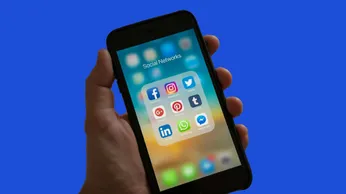On this page
The healthcare industry needs to start improving its customer experience, as it currently has one of the worst reputations among users. This poor quality has begun to affect the number of people using their local healthcare providers.
According to a Harris Poll, around 50% of patients put off seeking healthcare because they view it as too complex and inconvenient. This is affecting healthcare providers' potential income and harming the nation's overall health.
But thanks to various technologies such as AI, automated software, chatbots, and scheduling tools, improving customer experience in healthcare is easier than ever before.
When these emerging solutions are paired with effective customer experience management - which involves understanding and anticipating your patients' needs - customer experience can be improved so patients become far more engaged in the service.
The importance of customer experience in healthcare
In healthcare, the stakes are high. Patients aren’t just customers—they’re individuals often dealing with stress, illness, or pain. Their experience can have a profound impact not only on how they perceive your care but also on their overall well-being.
Customer experience in healthcare aims to enhance and optimize patients' overall satisfaction and well-being throughout their healthcare journey. Customer experience, often referred to as patient experience in the healthcare context, encompasses all patient interactions and touchpoints with the healthcare system, including interactions with healthcare providers, support staff, facilities, and technology.
Most important factors in healthcare customer experience
The patient experience in healthcare hinges on several important ingredients. Here are the top factors that make or break a great healthcare experience:
- Ease of access: Make it simple for patients to book appointments, access test results, and communicate with your team.
- Wait time: Long wait times can quickly sour an otherwise good experience. Reducing them shows respect for patients’ time.
- Clear communication: From appointment reminders to treatment plans, patients need clarity and consistency at every step, such as balancing efficiency with delivering empathetic and thorough responses within healthcare contact centers.
- Staff empathy: Friendly, compassionate care is key. A simple smile or a comforting word can make a huge difference.
- Personalized care: Treating each patient as an individual, with tailored care, makes for a more meaningful experience.
- Facility: A clean, safe environment is a top concern for patients, especially for infection control and hygiene, but facility comfort, including ease of navigation and privacy, is also important.
5 ways to improve customer experience in healthcare
When boosting healthcare customer experience, you must consider how a patient interacts with your healthcare institution and make these touchpoints as seamless and intuitive as possible. By trying to make things enjoyable and more straightforward, you'll naturally improve the patient's experience.
Here are five ways how to improve customer experience in healthcare:
1. Streamline the registration process
Many potential patients put off getting help with their medical issues because the registration process can be a hassle. By making scheduling an appointment easier, you can improve customer experience and boost the number of people using your practice.
The best way to simplify the process is by offering online registration. According to Experian Health, more than 8 in 10 patients prefer an online registration experience.
Once you've streamlined registration, you should also set up a system to remind patients of their upcoming appointments. Appointment reminders help reduce no-shows and late cancellations, helping you keep your calendar full and ensuring all patients get the care they need. Look for appointment reminder software with critical patient-centric features, such as two-way texting for booking confirmations and personalized messages.
2. Create clear communication options
If you're easy to reach and communicate with, patients will have a better overall experience with your healthcare facility. Be sure to offer as many communication channels as possible so it's more convenient for patients to communicate with you. Think of adding channels like email, SMS, phone calls, chatbots on your website, and even direct messages on your social media accounts.
Clear communication also includes being prompt with your responses. This may be tough if you're busy, but even sending an automated confirmation that you've received a message reassures patients and builds trust, improving the overall experience.
3. Provide easy access to healthcare information
Locking patient information away and making it hard to access is a surefire way to disengage your patients. Making it easier for them to access their data will help improve patient experience and keep them more engaged and empowered to take an active role in their health management.
The best way to do this is to allow your patients to create online accounts on your website. Once logged in, they can view their medical records and information and use that data to make positive changes in their lives. An online portal is also a great way to make booking appointments easier.
4. Personalize your care
Customers crave a personalized experience. Research from Abbot shows that 72% of patients want more personalized, tailored care. This can be done by altering your approach to correspondence and the messages you send to your patients.
By sending informational articles and advice related to their specific ailments and issues, you can provide a more valuable service to them. Plus, making the easy change to address each patient individually can also improve the overall patient experience, as they will feel more cared for.
5. Collect feedback
Asking for feedback can be a great way to demonstrate to your patients that their opinion and experiences matter to your institution. By getting patients to answer simple surveys and questionnaires, you'll get valuable information on areas you can improve on, helping you boost customer experience in the future.
Enhancing healthcare experiences through rewards
Rewards technology is transforming healthcare by creating value-driven experiences for both patients and doctors. For patients, it fosters engagement, loyalty, and better health outcomes by incentivizing regular checkups, medication adherence, and preventive care. For doctors, it enhances motivation, recognition, and job satisfaction, encouraging excellence in patient care.
By integrating a well-structured rewards system, healthcare organizations can boost retention, improve service quality, and create a more positive, rewarding environment for both providers and consumers.
Here’s how rewards can elevate customer experience in healthcare:
For customers (Patients):
- Encourages preventive care & regular checkups – Rewards incentivize patients to schedule routine checkups, screenings, and vaccinations, promoting overall health and reducing long-term medical costs.
- Enhances patient engagement – Offering loyalty points or perks for following treatment plans, attending wellness programs, or using digital health services keeps patients actively involved in their healthcare journey.
- Strengthens patient loyalty – Personalized rewards, such as discounts on future services or wellness-related perks, make patients feel valued, increases customer loyalty making it more likely to return to the same healthcare provider.
- Creates a better overall experience – Adding an element of recognition and appreciation makes healthcare interactions more positive, increasing patient satisfaction and trust in the provider.
For doctors & healthcare providers:
- Boosts engagement & motivation – Rewarding doctors for exceptional patient care, meeting performance targets, or participating in professional development programs enhances motivation and job satisfaction.
- Encourages continued education & training – Offering incentives for attending medical workshops, conferences, or e-learning programs ensures healthcare professionals stay up to date with industry advancements.
- Recognizes & retains top talent – A structured rewards program, including financial incentives, recognition awards, and experience-based perks, helps retain skilled medical professionals and reduce burnout.
- Enhances workplace culture – A strong rewards system fosters a culture of appreciation and excellence, improving teamwork, collaboration, and overall job satisfaction in the healthcare sector.
- Improves doctor-patient relationships – Doctors who feel valued and appreciated are more likely to provide higher-quality patient care, leading to better customer satisfaction and improved health outcomes.
Benefits of better customer experience in healthcare
Improving the customer experience for your patients doesn't just affect them; it can also benefit your healthcare team and your business by increasing employee performance and boosting income.
Here are a few other benefits of improving the patient experience at your healthcare organization:
1. Customer retention
Offering a better experience for your patients during their appointments will increase the likelihood of them using your institution again. Retaining patients is extremely valuable for a healthcare business, as it can improve the total lifetime value of that individual.
Research from Hubspot shows that a slight 5% increase in customer retention can result in a 25% increase in profit, as that extra 5% will be spending more money at your clinic over time. Plus, re-marketing to existing customers within your sales funnel is cheaper than marketing to brand-new patients.
2. Streamlined processes
Using technology to improve the customer experience for your patients can also have a knock-on effect and streamline things for your staff. For example, utilizing automated scheduling software can make sending appointment reminders easier and quicker, reducing the time staff spends on menial tasks. This gives them more time to work on other projects, increasing productivity.
3. Boosts brand perception
If you offer an excellent experience to your current customers, your brand perception and reputation will improve over time, helping you attract more business in the future. Patients will be more likely to share their positive experiences, encouraging more people in your area to consider your services. Using customer experience to improve your perception will make you an authority in your area, helping you grow profits and more.
4. Improves quality of care
As a healthcare professional or business owner, providing quality care should be one of your main priorities. Improving the customer experience will also enhance the quality of your treatments. For example, improving the customer experience by offering online consultations will allow patients to get advice on their conditions earlier, helping them get the care they need quickly.
Aster DM Healthcare, a prominent UAE-based healthcare provider faced a major challenge—its doctor rewards system was outdated, inefficient, and limited. Brand vouchers and products offered little flexibility, redemption options were scarce, tracking was difficult, and delivery delays frustrated recipients. As a result, engagement suffered, and the system failed to truly motivate doctors.
To solve this, they partnered with Plum to revolutionize its rewards program. Plum’s AI-powered storefront platform introduced 15,000+ redemption options, including experiences, gift vouchers, and perks across 70+ countries. With a centralized admin dashboard, HR managers gained full visibility into reward distribution, tracking redemptions with ease.
The biggest game-changer? Instant rewards. With just a click, managers could now instantly recognize and reward doctors, eliminating procurement delays and operational bottlenecks. Zero overheads, seamless redemption, and greater choice made the system not just efficient, but truly rewarding.
By removing friction and enhancing engagement, Plum’s solution transformed doctor motivation, aligning perfectly with the provider’s commitment to recognizing and empowering its healthcare professionals.
Transform healthcare customer experience with Plum
Enhancing customer experience in healthcare is pivotal for patient engagement, satisfaction, and overall organizational success. Implementing a robust rewards program can significantly contribute to this enhancement by fostering loyalty and encouraging positive behaviors.
Plum offers a comprehensive customer rewards program platform tailored for the healthcare industry. Key features include:
- Personalized rewards programs: Design and automate rewards that cater to the unique needs and preferences of patients and healthcare staff, boosting engagement and retention.
- Scalability and flexibility: Whether you're managing a small clinic or a large hospital network, Plum's platform adapts to your specific requirements, ensuring seamless integration and operation.
- Efficient reward distribution: Save time by bulk uploading recipient lists and sending rewards via email or SMS, streamlining the process and ensuring timely delivery.
- Multi-currency and localization support: Deliver rewards in various currencies and languages, catering to a diverse patient base and enhancing the personalization of the experience.
- Seamless integrations: Plum integrates effortlessly with existing ERP and eProcurement systems, simplifying the implementation and management of your rewards program.
By incorporating Xoxoday Plum into your healthcare facility, you can expect improvements in patient satisfaction, loyalty, and overall performance.
Take the next step in transforming your healthcare customer experience. Book a free demo and we will get you started!















